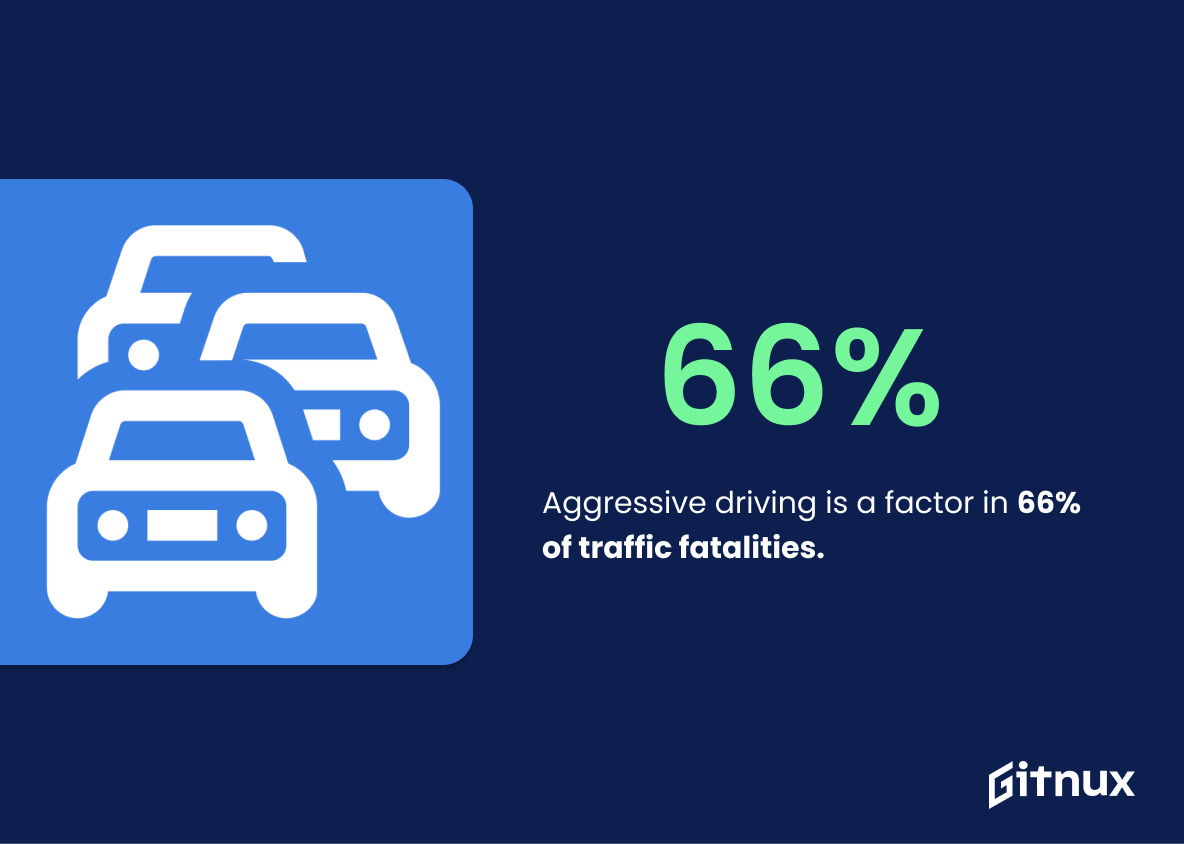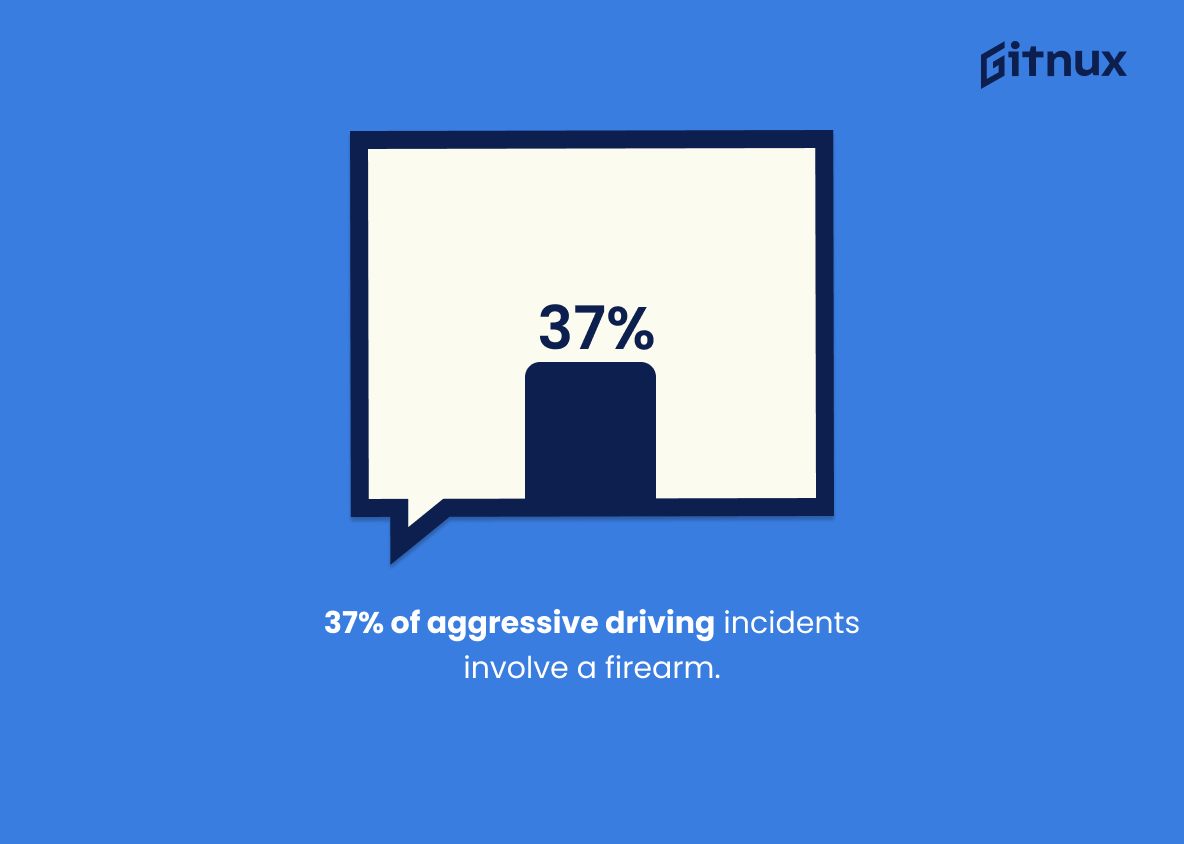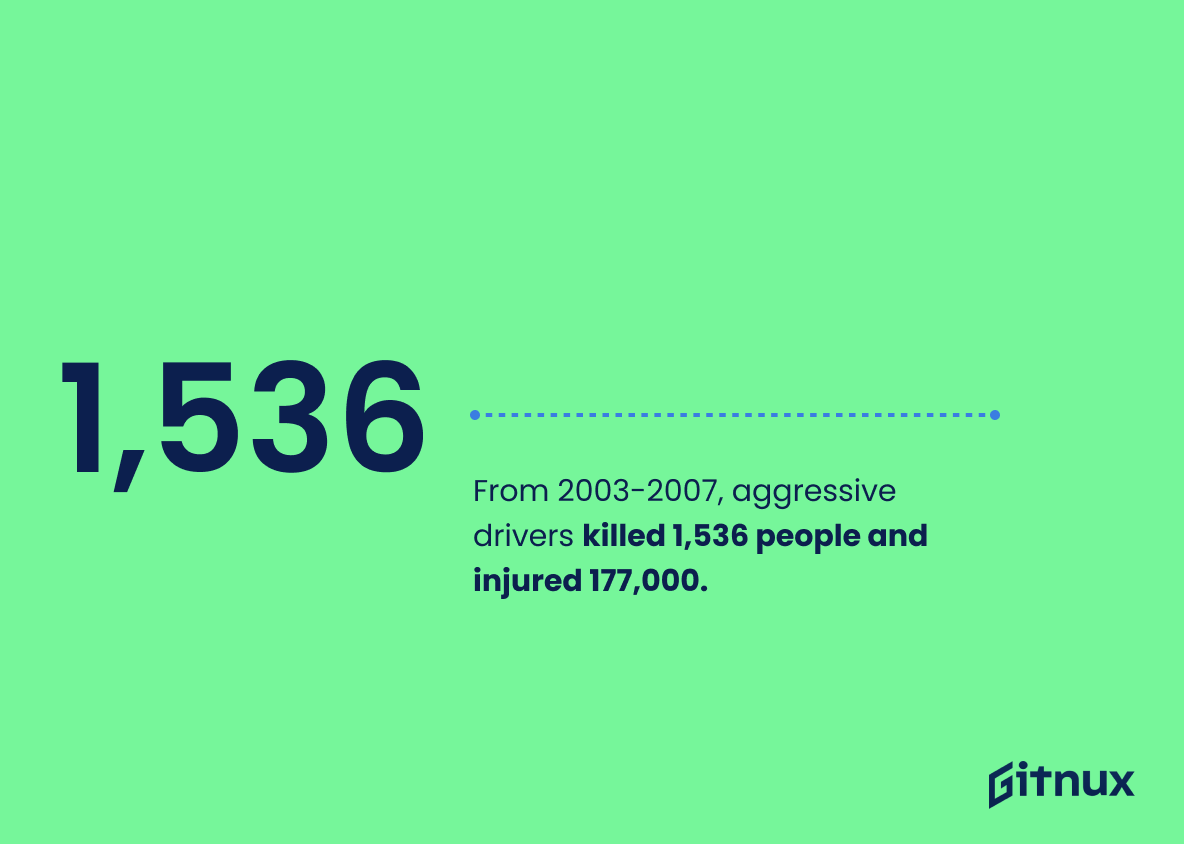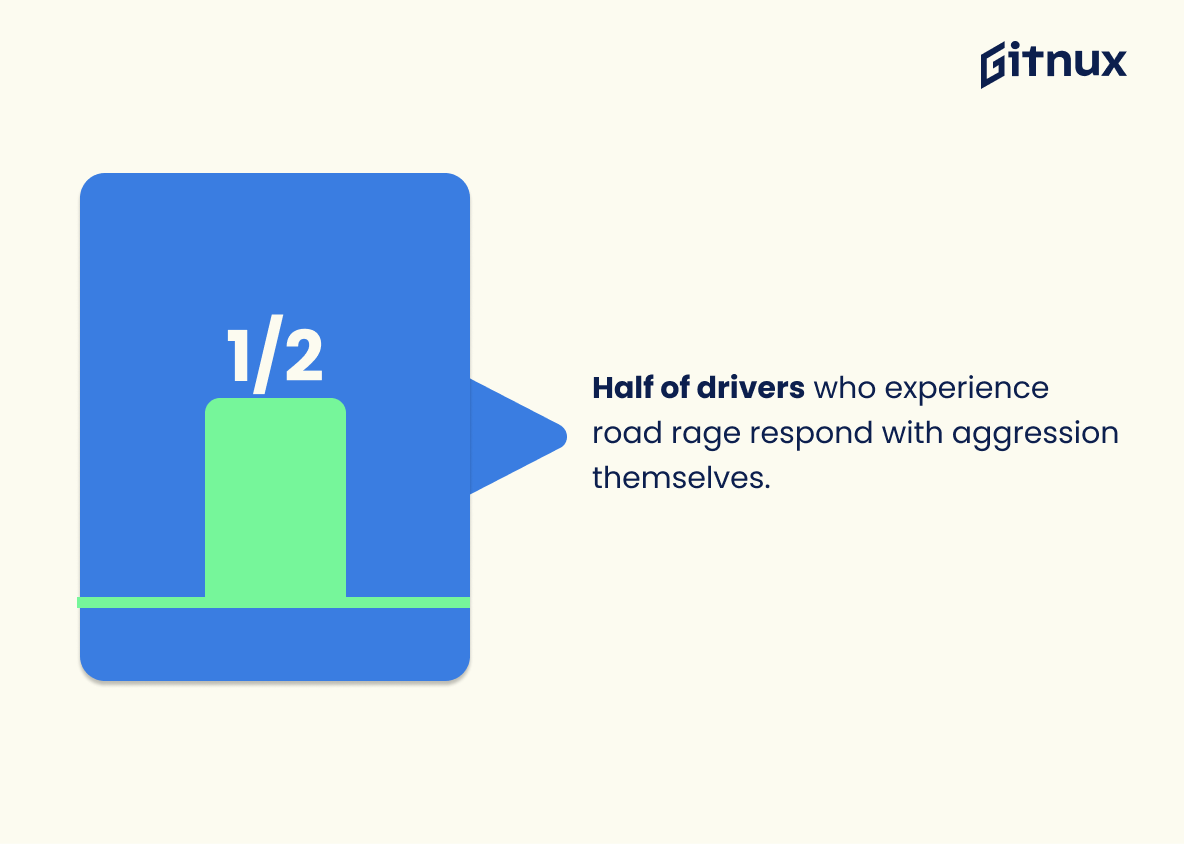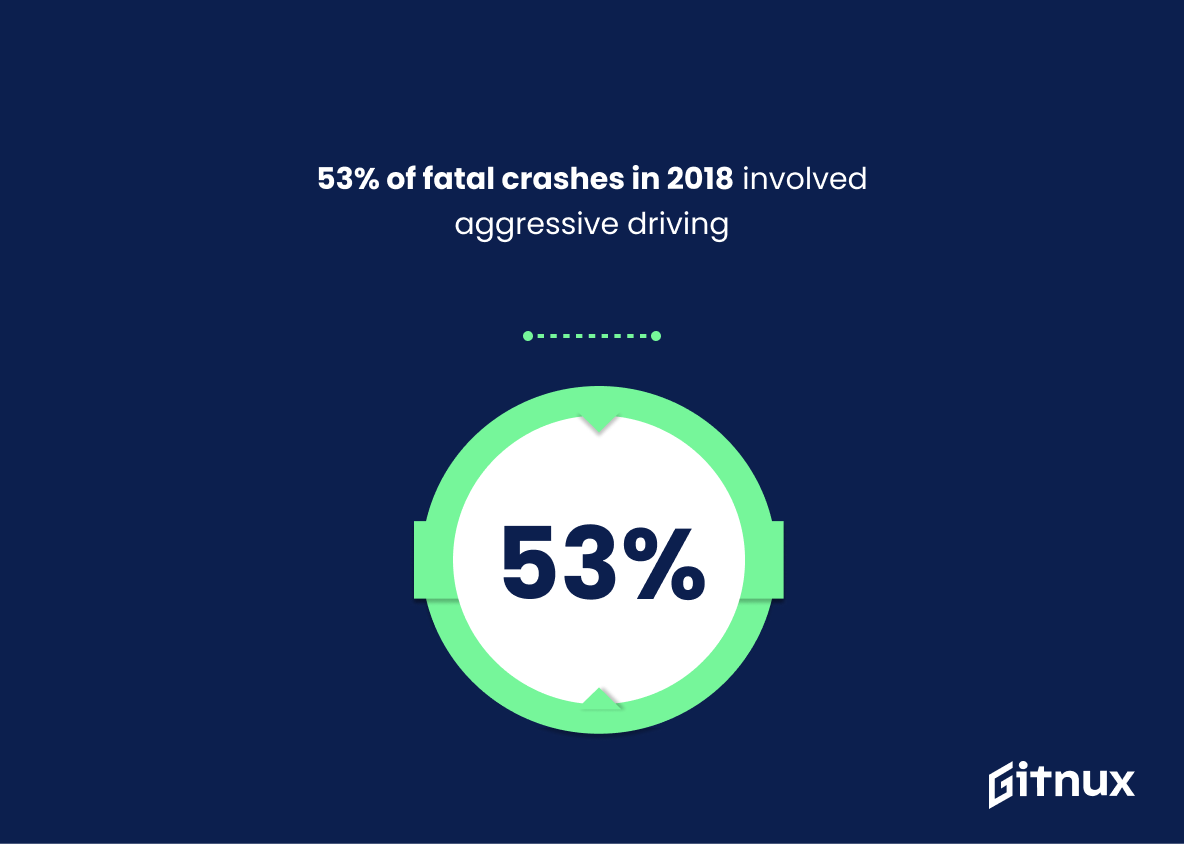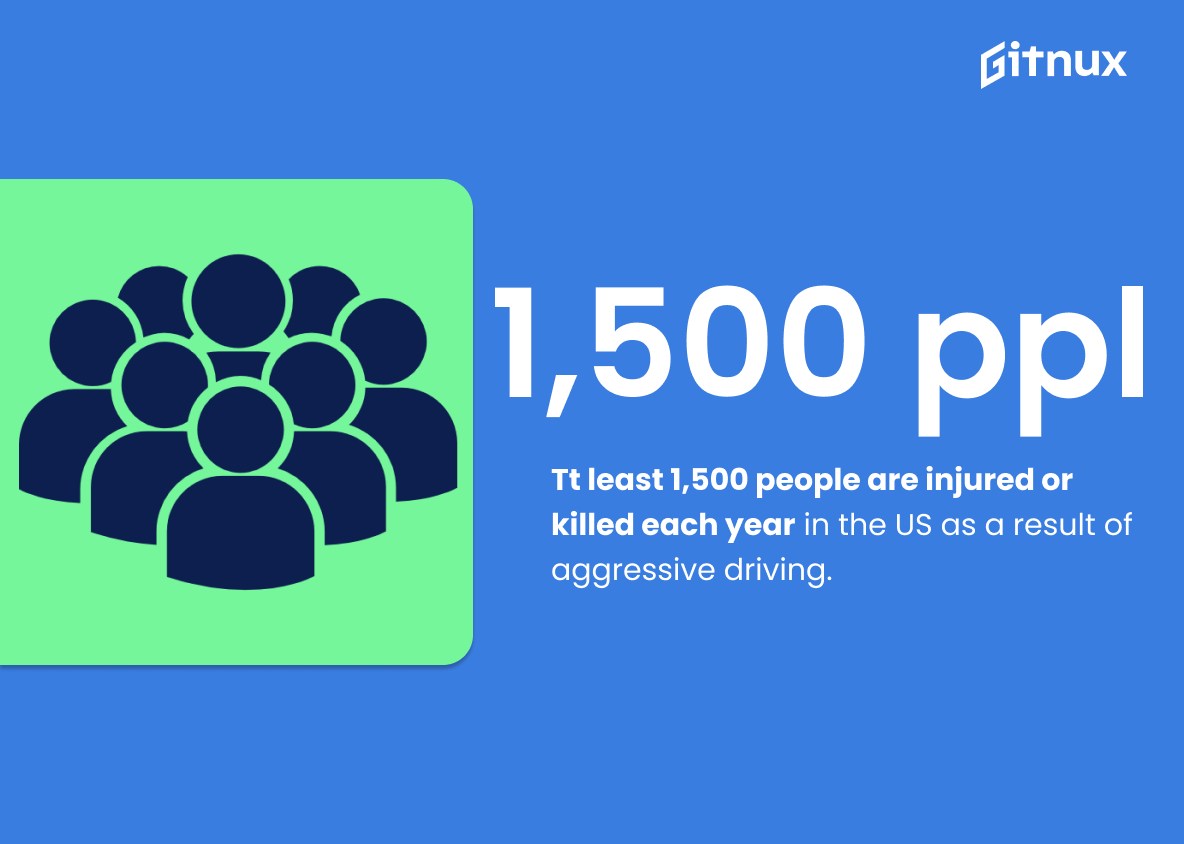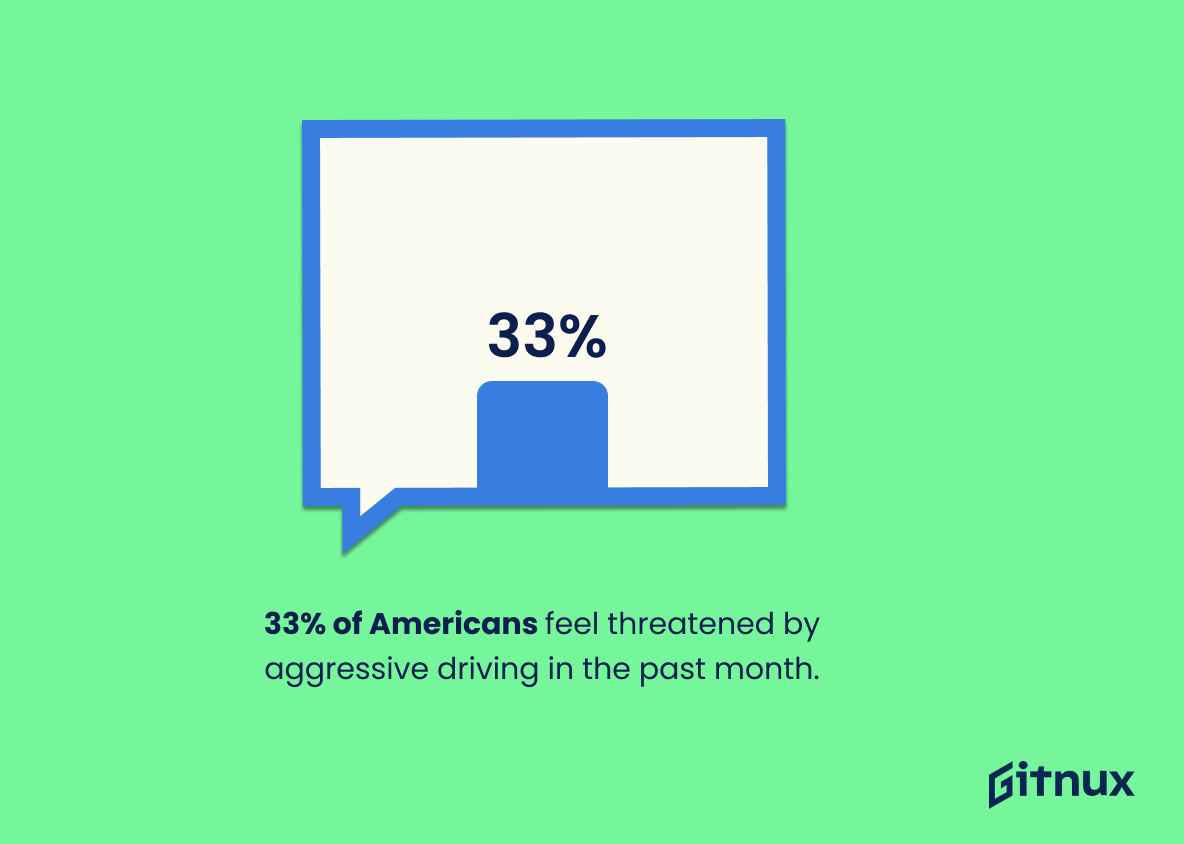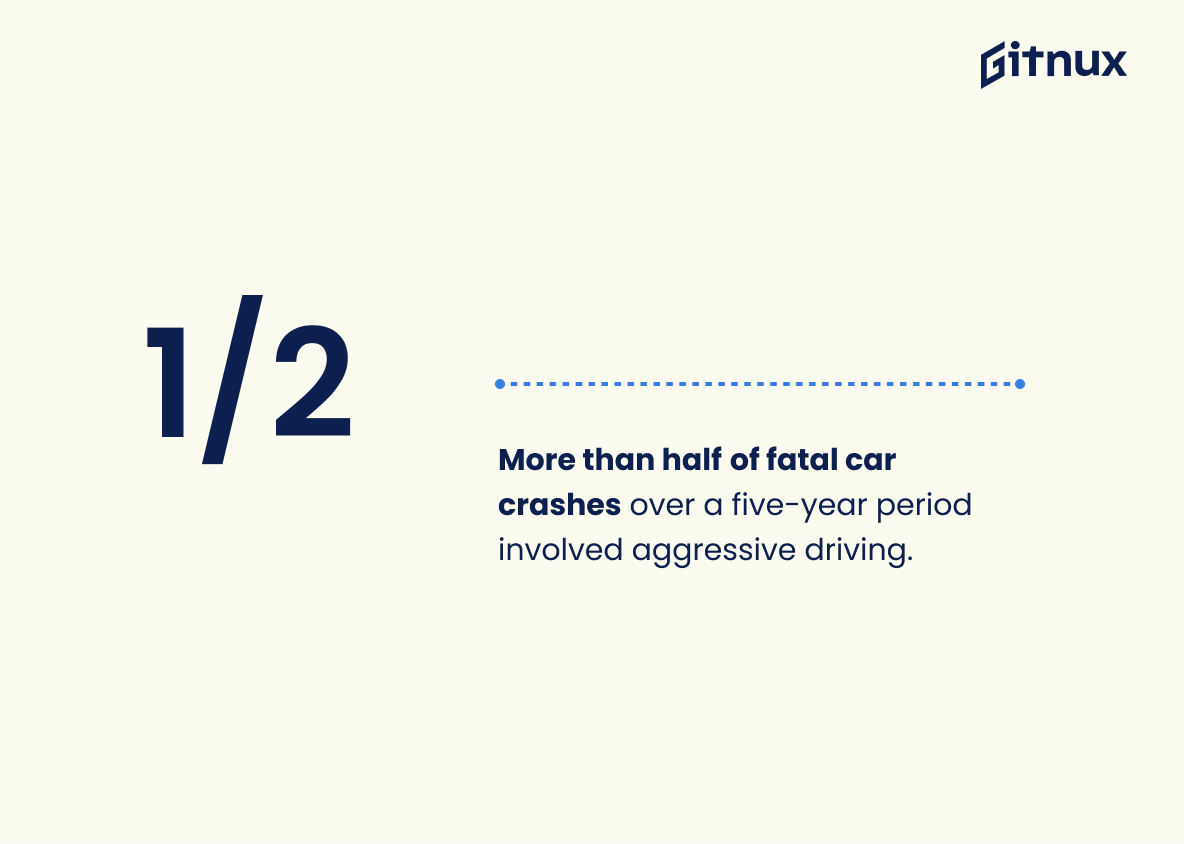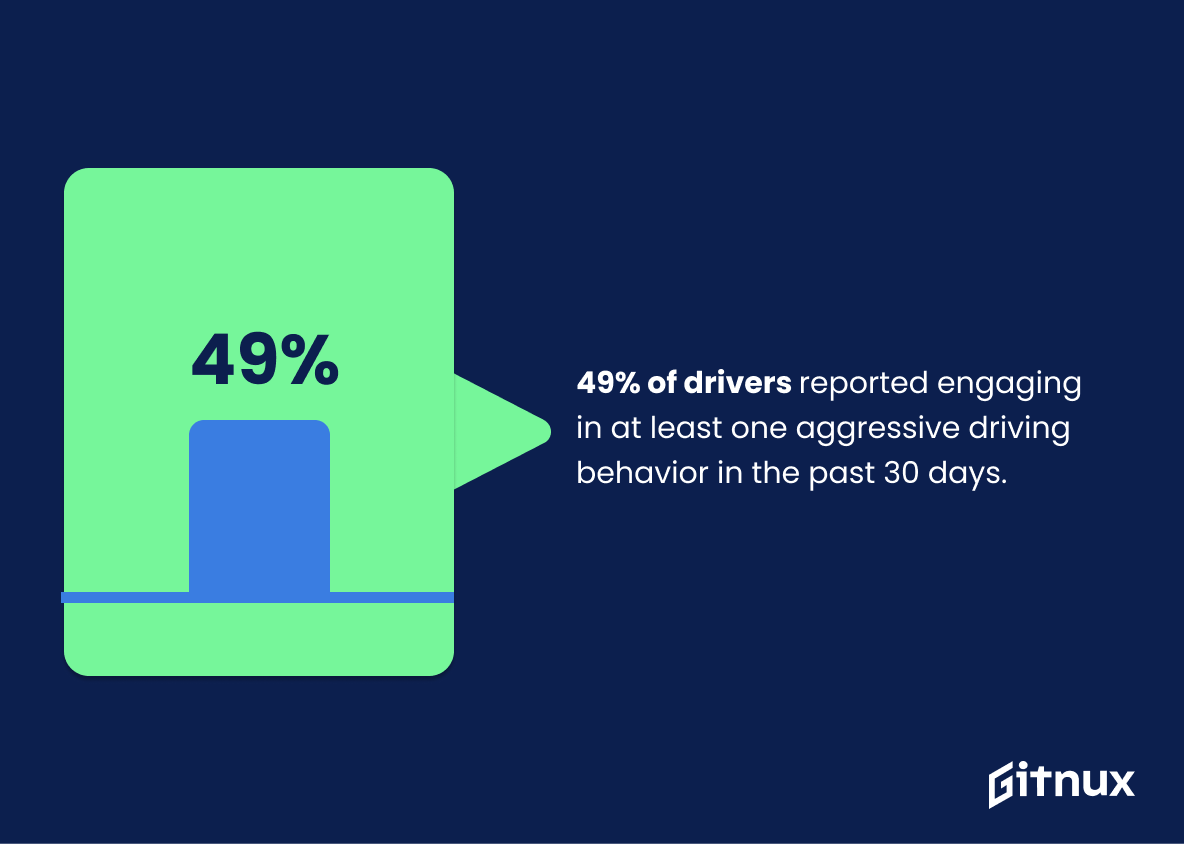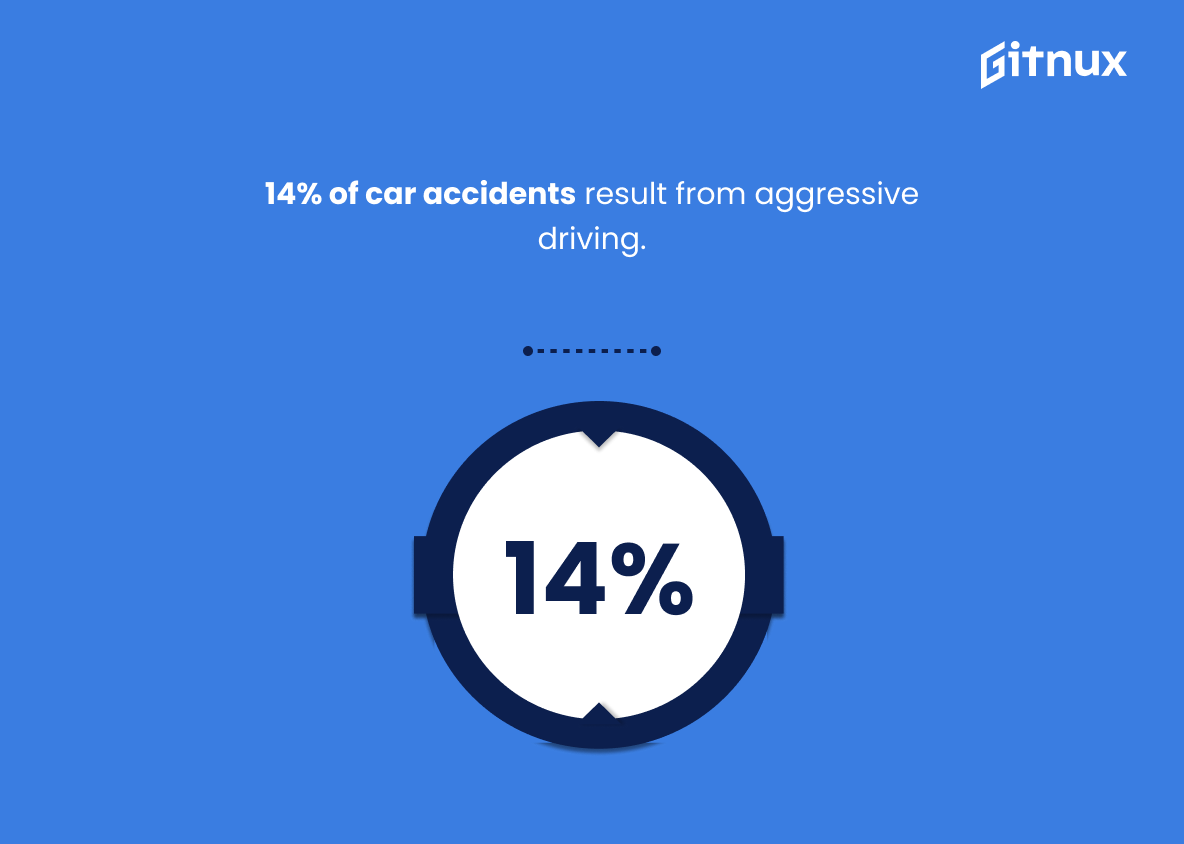Driving is an essential part of our day-to-day lives, but what happens when this routine activity turns aggressive? Aggressive driving is not just a nuisance, it’s a grave safety concern, and the statistics are worrisome.
In this blog post, we’ll delve deep into the harsh realities presented by aggressive driving statistics. We’ll uncover the deadly toll it takes on our roads, and why it’s essential for every driver to understand the seriousness of this issue. So, fasten your seatbelt as we navigate through the jarring world of aggressive driving.
The Latest Aggressive Driving Statistics Unveiled
Aggressive driving is a factor in 66% of traffic fatalities.
Woven into the rich tapestry of data surrounding aggressive driving, the thread that snags your attention most is the staggering percentage of traffic fatalities it causes: a whopping 66%. This numerical harbinger of doom serves as a chilling wake-up call, echoing through our understanding of traffic safety.
The cruel grip of aggressive driving on our traffic reality is evident, casting an ominous spotlight on our behaviors on the road. Like a blunt instrument, this figure hammers home the dire consequences of road rage and impulsive maneuvering, making it a standout factor in the discourse on aggressive driving statistics.
37% of aggressive driving incidents involve a firearm.
Immersing ourselves into the world of “Aggressive Driving Statistics,” one figure jumps out like a rogue wave in a calm sea – ‘37% of aggressive driving incidents incorporate a firearm.’ This percentage is not just a mere number. Instead, it paints a terrifying portrait of the road rage landscape.
It points to the chilling marriage of high tension driving incidents and the ominous presence of firearms, transforming a mere traffic dispute into a potentially life-threatening encounter. This stark reality check serves to reinforce the need for calm, calculated reactions on the road, underlining the dire consequences that may ensue when tempers flare behind the wheel.
From 2003-2007, aggressive drivers killed 1,536 people and injured 177,000.
Such a formidable number presents a stark reality, a chilling testament to the life-shattering impacts of aggressive driving. Unraveling the numbers from a five-year stretch—1,536 fatalities and 177,000 injuries—we are confronted with the immense proportion of innocent lives disrupted or ended by reckless behavior on the road.
This, in the realm of our daily vehicle use, underscores the serious, potential hazards posed by aggressive drivers—menacing not just their own lives, but also the safety of others unwittingly sharing their paths. Therefore, recalling these staggering statistics ignites an urgent call for comprehensive approaches to address aggressive driving, making the roads safer for all.
Half of drivers who experience road rage respond with aggression themselves.
In the thrilling orchestra of aggressive driving statistics, the tune that resonates intriguingly is the one that declares: ‘Half of drivers who experience road rage respond with aggression themselves’. This has a profound magnitude in our understanding of how road rage acts almost like a contagious virus, spreading from one driver to another. It unveils not just the prevalence of aggression on the roads, but also highlights the reactive nature of driving behaviors. It tells a story of escalating tension, portraying a reaction akin to the domino effect, making every commute a potential ground for a chain of aggression.
Revealing this helps us to shed light on both the psychological patterns at play in aggressive driving incidents and the cascading effect it can have on traffic safety. This insight guides us in sculpting effective countermeasures, underlining the importance of restraint and emotional control while behind the wheel. It’s a wake-up call and a critical plea for increased communication about deciphering threats on the road and harnessing our responses to them.
53% of fatal crashes in 2018 involved aggressive driving according to the National Highway Traffic Safety Administration.
Delving into the grim reality of road safety, we discover some unsettling revelations. One such revelation is the striking figure from the National Highway Traffic Safety Administration which sheds light on the menacing issue of aggressive driving. A chilling 53% of fatal accidents in 2018 were the aftermath of such dangerous behaviour, creating a brutal portrait of the roads we travel on.
In a blog post discussing Aggressive Driving Statistics, this stark figure acts as a chilling reminder of the grave threats posed by this epidemic on our roads. It enhances readers’ understanding of how aggressive driving is not merely an irresponsible act but rather a potential harbinger of tragedy. The statistic underscores the urgency for effective solutions to curb this issue and serves as a call to action for driving enthusiasts, lawmakers, and enforcers to join hands in preventing such avoidable accidents. With such alarming numbers, one can’t help but consider this figure a siren song, alerting us to the immediate need for more responsible driving practices and stricter traffic regulations.
The AAA Foundation for Traffic Safety reports that at least 1,500 people are injured or killed each year in the United States as a result of aggressive driving.
Highlighting a sobering revelation from the AAA Foundation for Traffic Safety serves to underscore the urgency and real human impact of aggressive driving. This concrete data injects a factual backbone into our blog post about Aggressive Driving Statistics, painting a harsh picture of at least 1,500 lives disrupted, if not ended, annually due to aggressive driving incidents in the U.S alone.
Public awareness of this chilling statistic could be a tipping point sparking discourse and initiatives aimed at curbing aggressive driving, thereby saving lives and preventing injuries. Therefore, incorporating this data allows our blog post to not just inform, but to serve as a catalyst for change.
33% of Americans feel threatened by aggressive driving in the past month.
Delving into the depths of the study, it’s striking to discover that approximately a third of Americans have expressed a sense of threat due to aggressive driving within the last month. Giving visibility to this piece of data, we underscore its poignance within our exploration of aggressive driving statistics.
Not only does this illustrate the extended arm of such unwarranted road behavior into the daily life of American citizens, but it also reflects the emotional toll prompting significant worry and stress. Its pivotal importance nestles within its ability to potentially pave the way for advocacy and preventative measures. In turn, this could lead to more comprehensive and protective driving laws, possibly reducing the number of accidents, enhancing road safety and ultimately improving the overall driving experience.
Highlighting this statistic paints a subtler picture too. It serves as a reminder that aggressive driving doesn’t just concern those engaged in the act, but its ripple effects touch the nerves of a much wider spectatorship. The realization that one out of every three people around you felt threatened by aggressive driving recently can spark increased vigilance, empathy, and responsibility behind the steering wheel.
More than half of fatal car crashes over a five-year period involved aggressive driving, such as speeding, tailgating, or failing to yield.
Unfolding the reason behind this striking statistic provides the fuel to the fire of our discussion about aggressive driving statistics. We find this information forming a significant cornerstone in our understanding of just how lethal aggressive behavior behind the wheel can be. The gravity of the fact that over half of car crash fatalities within a five-year span were due to aggressive acts like speeding, tailgating, or failing to yield is not lost to us.
This realization burnishes our comprehension of the far-reaching and deadly consequences of reckless driving habits. It paints a grisly picture clear enough to evoke changes in public attitude and policy surrounding driving etiquette and safety.
49% of drivers reported engaging in at least one aggressive driving behavior in the past 30 days.
Envision this statistic as the pivotal, penetrating insight into the prevalence of aggressive driving within our society. The auditory shockwave that hitting ‘49%’ reverberates, revealing that nearly half of all drivers have admitted to at least one instance of aggressive driving in the past month alone. It serves as a stark reminder that highway hostility is not an isolated incident, but rather a pervasive problem.
This figure suggests that many of us are not immune to lapsing into fits of road rage, succinctly highlighting the urgency and pervasiveness of aggressive driving behavior. It acts as a mirror, reflecting the alarming reality onto the reader’s consciousness, making this blog post on Aggressive Driving Statistics a catalyst for critical thought and potential behavior change.
14% of car accidents result from aggressive driving.
Highlighting the fact that 14% of car accidents stem from aggressive driving serves as a stark reminder of the significant role that road behavior plays in traffic safety. Considering this alarming statistic, discussions on aggressive driving are not just informative—they act as crucial lighthouses on the turbulent sea of roadway interactions.
They offer a sobering snapshot of the potential danger lurking in the unchecked tempers of road users. Our attempt to curate a safer driving environment is inextricably tied to confronting the reality represented by this 14% – a figure that elevates the conversation beyond abstract concepts, revealing the tangibly hazardous impacts of aggressive driving.
80% of drivers express significant anger, aggression, or road rage behind the wheel.
Feast your eyes on this compelling figure: eight out of every ten drivers demonstrate substantial anger, aggression, or road rage while on the road. This volatile brew of emotions is not just a concerning blink on the psychological radar—it’s a stark red warning sign that underscores the gravity of aggressive driving in our society today.
In the context of aggressive driving statistics, this startling statistic forms the nerve center of the discourse. It vividly portrays the rampant pervasiveness of vehicular animosity, effectively fueling our inherent need for caution, civility, and empathy on the highways.
Let this formidable number serve as an echo chamber, amplifying the urgency for insightful conversations and proactive measures to mitigate this menacing driving behavior. For at the heart of it, these aren’t just numbers on a page, they are stark reminders of volatile conditions on our roads, influencing the creation of safety policies, driver education programs, and societal attitudes towards aggressive driving. The reverberation of this statistic is felt through every written word on this blog.
Conclusion
Aggressive driving is a growing issue that continues to endanger the safety of drivers worldwide. Current statistics underscore the severity of this problem, showing the alarmingly high percentage of accidents, injuries, and fatalities linked directly to such reckless behavior.
As we navigate through our daily commutes, it remains our collective responsibility to foster a culture of respect, patience, and understanding on the roads. Gradually, through education, increased awareness, preventive measures, and stringent laws, we believe a significant reduction in aggressive driving incidents can be achieved. Remember, every journey you make contributes to these statistics. Let’s choose to make them better, one drive at a time.
References
0. – https://www.mobility21.cmu.edu
1. – https://www.www.travelers.com
2. – https://www.newsroom.aaa.com
3. – https://www.www.safety.com
4. – https://www.driving-tests.org
5. – https://www.www.kars4kids.org
6. – https://www.www.consumerreports.org
7. – https://www.www.empowerbrokerage.com
8. – https://www.www.aaafoundation.org
9. – https://www.exchange.aaa.com
